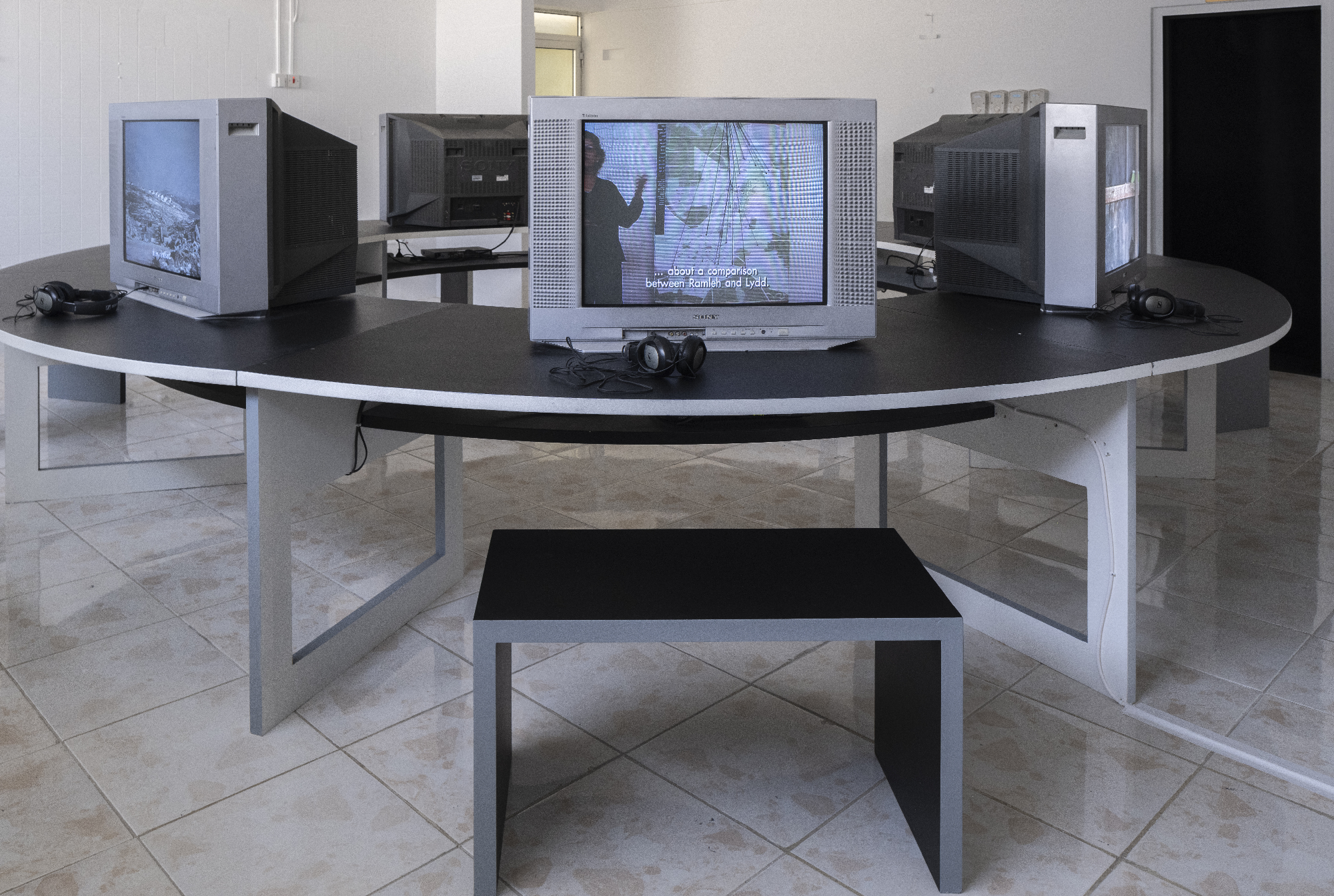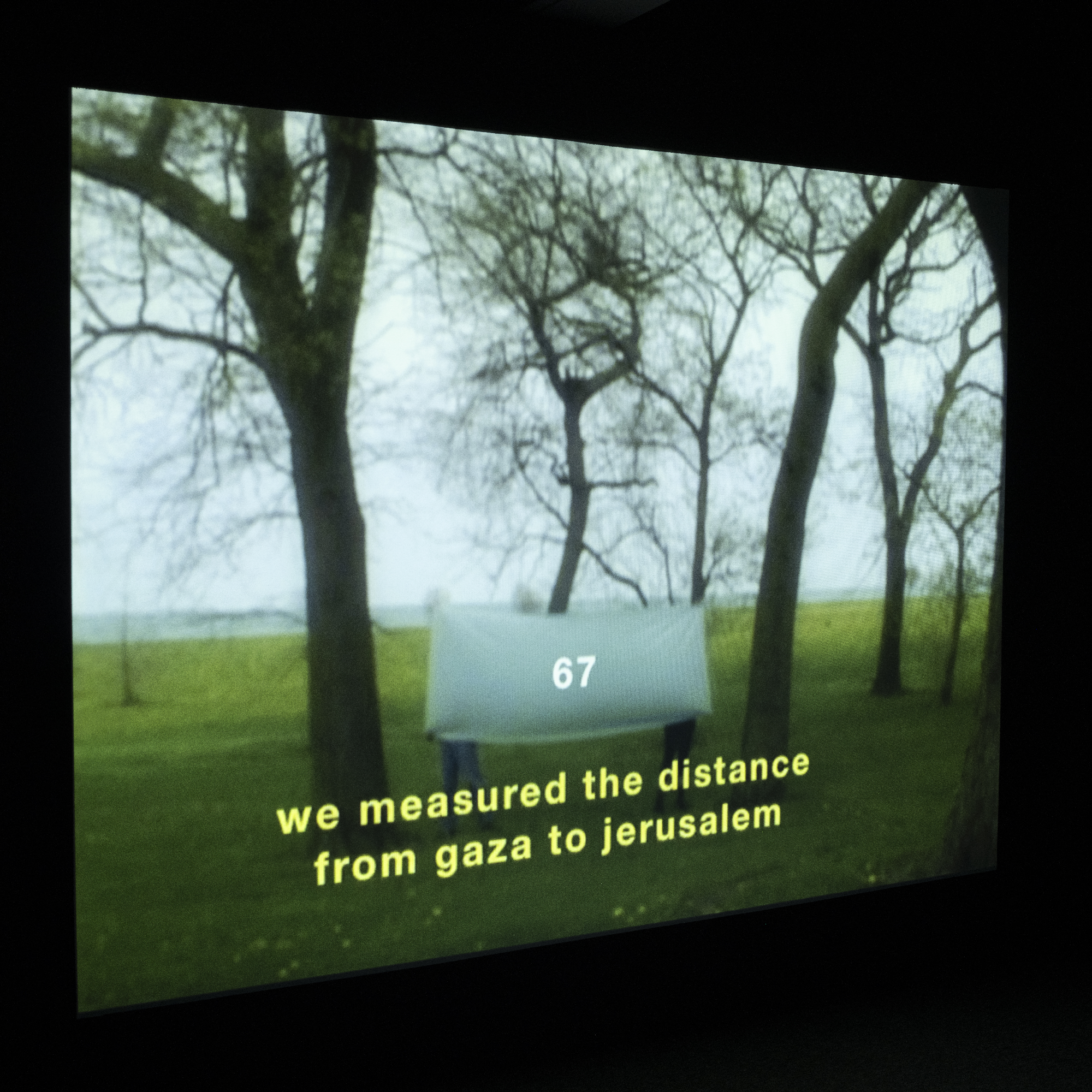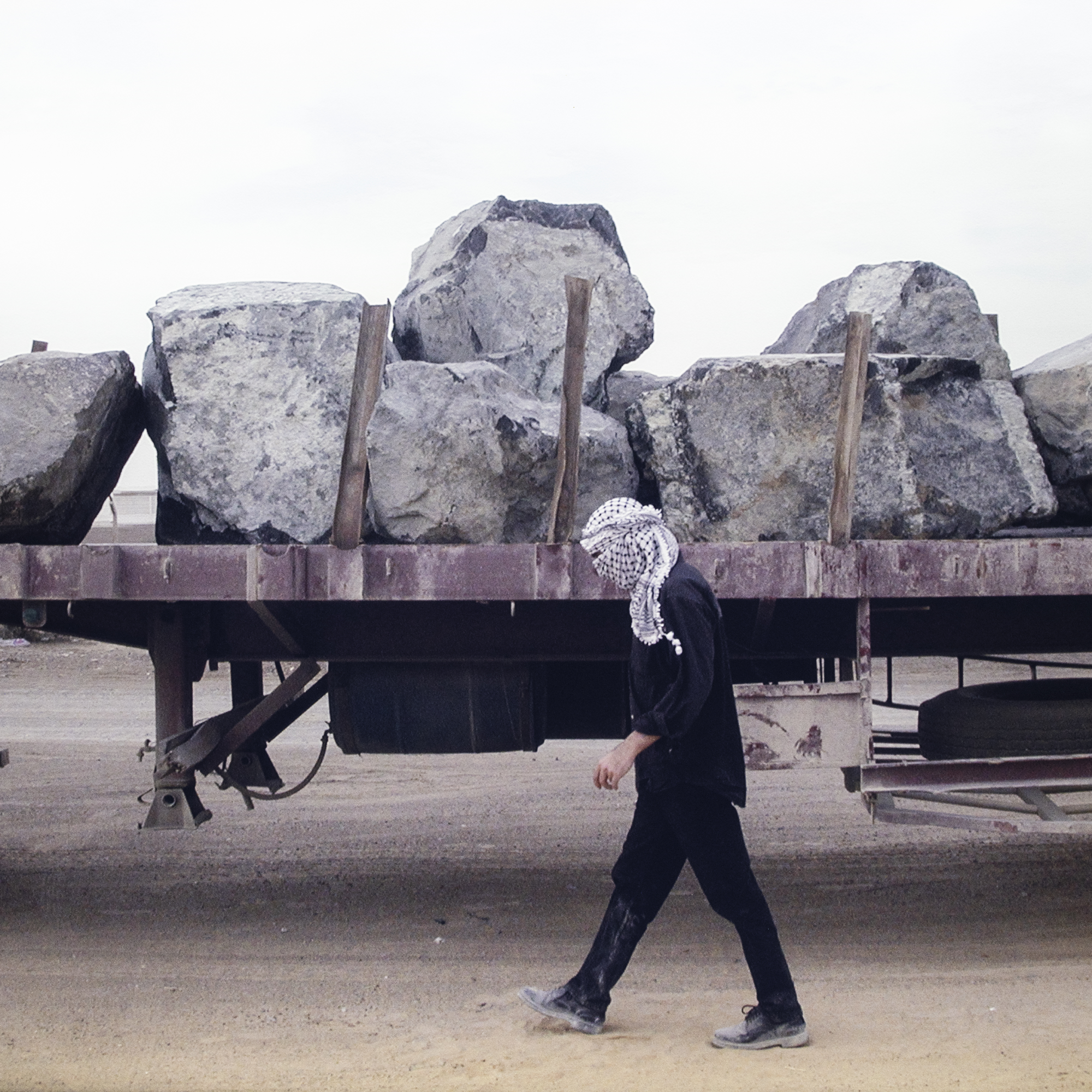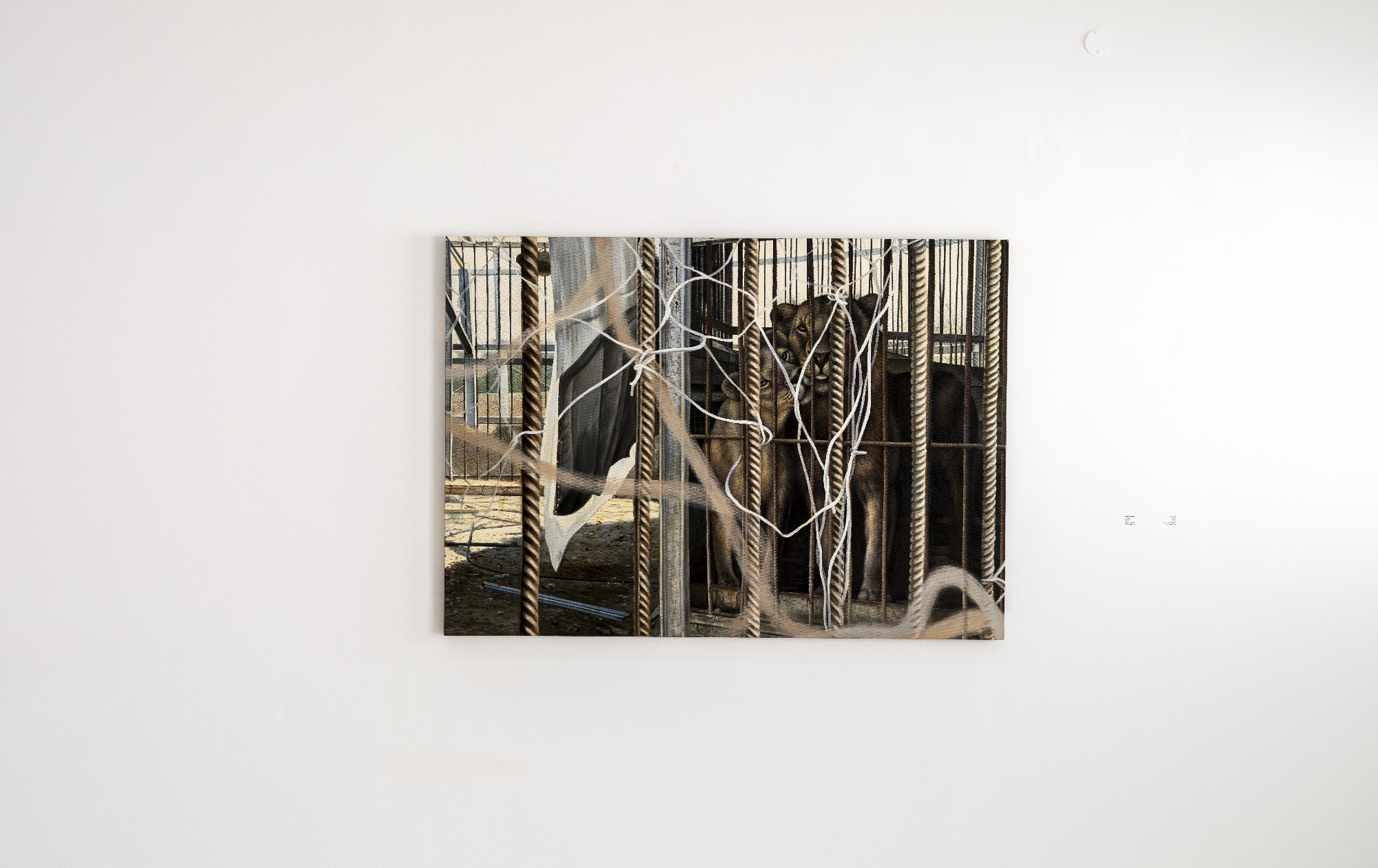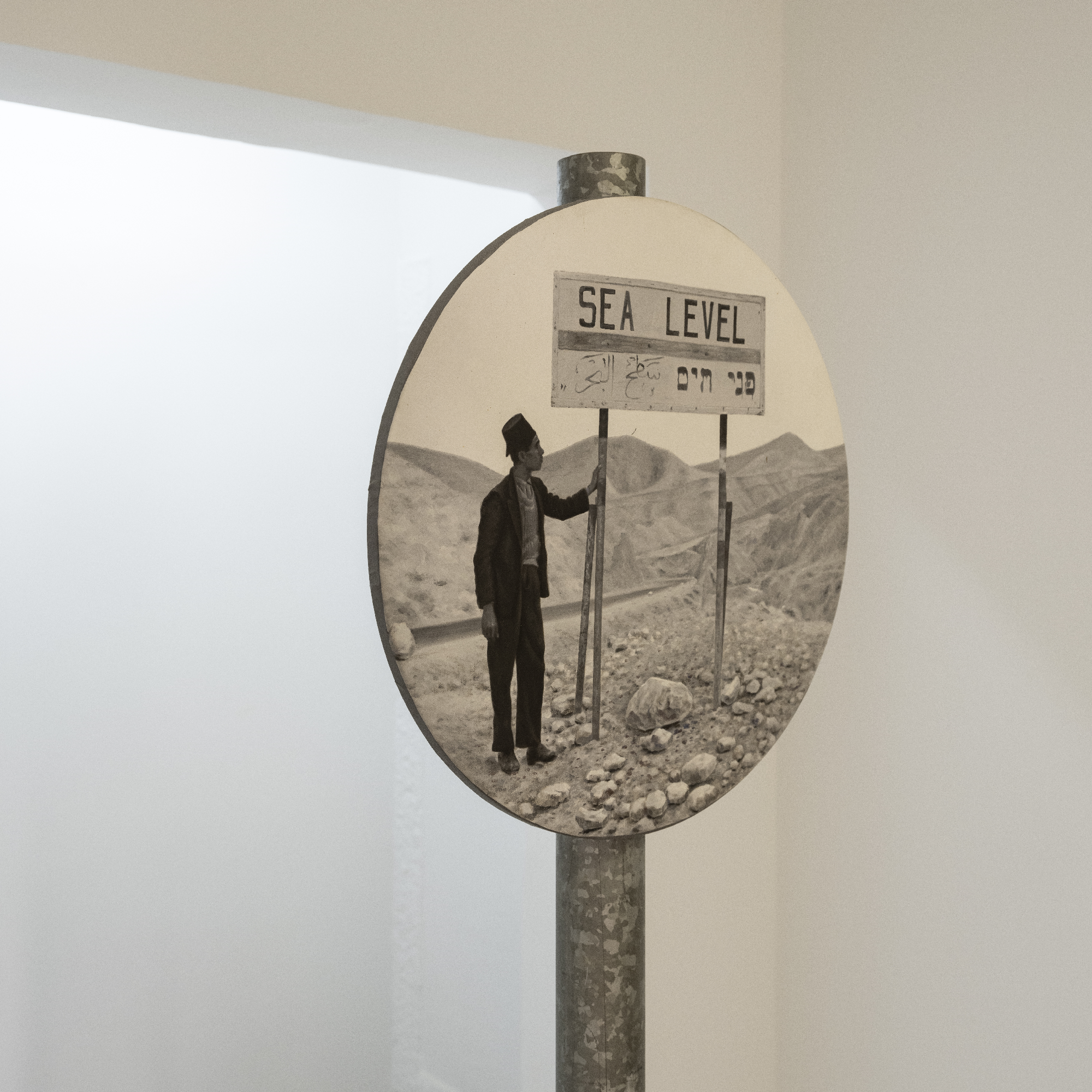Exploring the Sharjah Art Foundation exhibition, In the eyes of our present, we hear Palestine
The exhibition literature for ‘In the eyes of our present, we hear Palestine’ says that it “foregrounds the unyielding creativity of artists who have dedicated their practice to advocating and educating about the history of the occupation, the current political situation and issues of human rights in Palestine.” But there are aspects of it and works that feel more like a foreshadowing of the horrors unfolding in Gaza.
To begin with, the Sharjah Art Foundation’s curation of over 60 works from its collection is held at the Old Al Dhaid Clinic Arts Palace. This former hospital, with all of its past scars, can’t help but make you reflect on the medical situation that the people of Gaza face. At the time of writing this, only 12 of the city’s hospitals are even partially functional. A sign for a former maternity ward hits like a gut punch reminding you of the women in Gaza having caesareans without anaesthetic. At the same time, the content of the exhibition is a constant reminder of just how useless we all are. Because while it’s, “presented in consideration of the ongoing tragedy in Gaza,” there are works included that date back to a couple of years after the beginning of the Nakba in 1948. That’s at least how long Palestinian artists have been asking us to act for.
Khalil Rabah’s Palestine After Palestine: Architecture Apart New Sites for the Museum Departments (2017), includes a sculpture of a lion; a reference to the daring rescue of lions from a zoo in Palestine to safety in Jordan. It’ll make you reflect on the honour with which Palestinians act, as well as think of those people displaced into their neighbouring country.
Elsewhere, Rashid Masharawi’s Shahrazad (2009) is a nine minute and 36 second reflection on the monotony of living in a camp – cleverly made, watching it feels longer. Basma Al Sharif’s We Began by Measuring Distance (2009) video installation begins with physical measurements before transitioning to political distances, between dates, cities and upheavals. The final frame reads, “We measured the distance between Palestine and Israel and found that Rome was not built in a day.” How heartbreakingly true that the current devastation is part of a much longer story. And of course, a seven-screen installation of Ayreen Anastas and Rene Gabri’s, What Everybody Knows (2006), with interviews with Palestinians from all walks of life, about life under occupation, could not be more aptly named.
Then there’s Sharif Waked’s To Be Continued (2009). We’re presented with a scene that's familiar to anyone with a passing knowledge of Hollywood’s idea of a jihadist. It’s not, of course and the actor, played by Saleh Bakr, is not reading from his will. He’s reciting 1001 Tales. And just like the character Scheherazade in the original book, he’s attempting to postpone his execution by reciting the stories. Which made me think, is this not exactly what Palestinian storytellers have been doing, and continue to do? They tell us 1001 times, of their lives, loves and artistry, in a bid to stave off the destruction that Israel has lusted for since Balfour signed that treacherous declaration.
We’ve been told over and over again and across every conceivable medium – even just within the last year, amongst all of that unimaginable pain. Life under occupation is embroidered into Nöl Collective's beautiful garments, Isabella Hammad’s checkpoint scene in Enter Ghost is so visceral it feels like your heart stops for a moment, while Trashy Clothing use satire and fashion to inform. It’s been very literally broadcast by the brave journalists of Gaza – over 100 of whom have been martyred in the last six months. And Saint Levant, with MC Abdul, in the video for Deira, shows us a beautiful glimpse of what Palestine would look like were it not under brutal occupation. So, as we walk around exhibitions like this, crying our useless tears, at some point we have to look at ourselves and ask, ‘How many more times and in how many more ways can we be told?’
Read our feature on the Sharjah Art Foundation’s March Meeting here.


